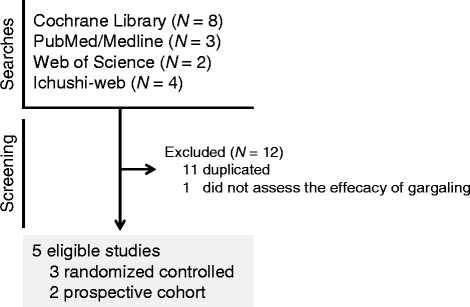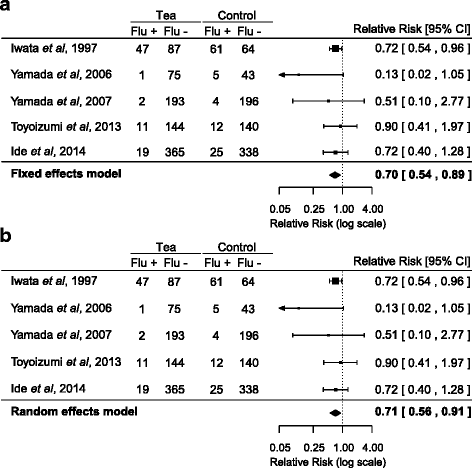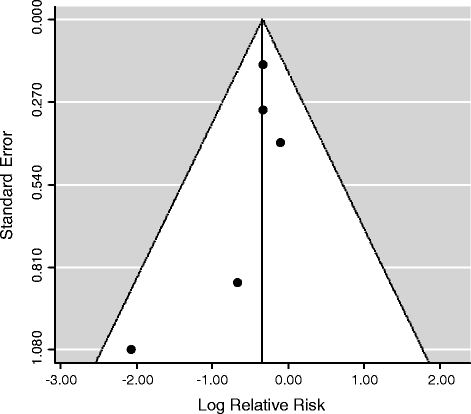Effect of gargling with tea and ingredients of tea on the prevention of influenza infection: a meta-analysis
- PMID: 27175786
- PMCID: PMC4866433
- DOI: 10.1186/s12889-016-3083-0
Effect of gargling with tea and ingredients of tea on the prevention of influenza infection: a meta-analysis
Abstract
Background: Influenza viruses can spread easily from person to person, and annual influenza epidemics are serious public health issues worldwide. Non-pharmaceutical public health interventions could potentially be effective for combatting influenza epidemics, but combined interventions and/or interventions with greater effectiveness are needed. Experimental studies have reported that tea and its ingredients (especially catechins) have antiviral activities. Although several clinical studies have investigated the use of tea or its ingredients to prevent influenza infections, the effect of gargling these substances has remained uncertain.
Methods: We conducted a meta-analysis of randomized controlled studies and prospective cohort studies to assess the effect of gargling with tea and its ingredients on the prevention of influenza infection. The published literature was searched using the Cochrane Library, PubMed/MEDLINE (1966 to September 2015), Web of Science (1981 to September 2015), and Ichu-shi Web (1983 to September 2015). The extracted studies were read by two reviewers independently, and their overall scientific quality was evaluated. Studies meeting our inclusion criteria were pooled using the Mantel-Haenszel method in a fixed effects model and were also analyzed in a random effects model. The qualities of the model fits were assessed using the Akaike information criterion (AIC) and Bayesian information criterion (BIC).
Results: The literature search and review identified 5 studies that met the inclusion criteria for the meta-analysis (total number of participants, 1890; mean age range, 16-83 years). The participants who gargled with tea or its ingredients showed a lower risk of influenza infection than did participants who gargled with placebo/water or who did not gargle (fixed effects model, Mantel-Haenszel method: relative risk [RR] = 0.70, 95 % confidence interval [CI] = 0.54-0.89; random effects model: RR = 0.71, 95 % CI = 0.56-0.91). The fixed effects model had a better quality of fit than the random effects model (fixed effects model: AIC = 6.04, BIC = 5.65; random effects model: AIC = 8.74, BIC = 7.52).
Conclusions: Gargling with tea and its ingredients may have a preventative effect for influenza infection. However, additional large-scale studies in different populations and a pooled analysis of these studies are needed to confirm the effect.
Keywords: Catechins; Hygiene; Infection; Influenza; Meta-analysis; Tea.
Figures
References
-
- WHO. Influenza (Seasonal). Fact Sheet No 211 2014. http://www.who.int/mediacentre/factsheets/fs211/en/. Accessed 13 Oct 2015.
Publication types
MeSH terms
Substances
LinkOut - more resources
Full Text Sources
Other Literature Sources
Medical
Miscellaneous




